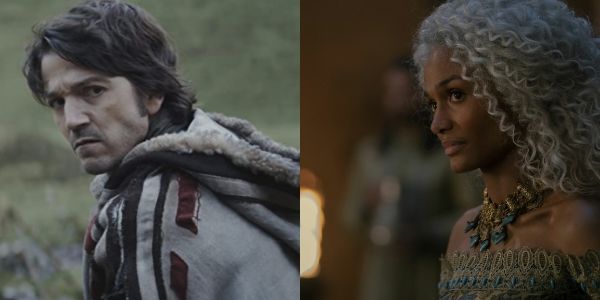Andor and House of the Dragon: Character Depth and Canon

Andor and House of the Dragon are two very different Big-IP prequels. Where Andor pauses to sink deep into episodic pockets of time and place, House of the Dragon skims across the decades and kingdoms of Westeros. Where Andor foregrounds the ordinary people who are affected by arbitrary imperial decrees, House of the Dragon reduces them to dragon-fodder. Yet the two shows do have one crucial similarity:1 both reach beyond the text of the show itself to establish character depth.
Like Game of Thrones, House of the Dragon use violent deaths for dramatic punctuation, but the brisk pace of the narrative leaves us little time to form an emotional connection with the characters. This problem was especially conspicuous in episode six, “The Princess and the Queen”, which was preceded by a ten-year time jump. The climax of the episode was constructed around two deaths by fire — Harwin Strong (arson) and Laena Velaryon (dragon) — but neither carried any real dramatic heft because of the minimal screen time we had spent with these characters.
These narrative elisions are not gaps for the viewer to colour with their imagination, but footnotes directing them to a deeper level of canon. In Fire and Blood, the pseudo-historical text that the show is based upon, we can learn more about how Laena’s life between childhood and motherhood, about how she claimed Vhagar and why that might make her death more poignant and meaningful. But the show itself does not take the time to earn the pathos of that moment.
Though he is not quite the blank slate of Pedro Pascal’s Mandalorian, Cassian Andor is a relatively opaque character. Diego Luna communicates a great deal without speaking, but our access to his interior remains limited. We know he won’t hesitate to pull a blaster trigger. We know he loves Maarva. We know he feels a vague antagonism towards the Empire. (We know he’s a good swimmer?) But his motivations still feel fragmentary and discontinuous (he spent the opening episodes of the show in pursuit of a sister we have barely heard mention of since). Characters who appear only for a three-episode arc, like Kino Loy, played by Andy Serkis, or Alex Lawther’s Karis Nemik, feel more substantial than Cassian, even after we have spent almost an entire season in his company.
Diego is not the problem. The character is barely a character.
— Alan Sepinwall (@sepinwall) November 5, 2022
Until we remember Rogue One. By the time he reaches Scarif, Cassian has become a leader with an ideological drive. The Cassian of Andor is one line, the Cassian of Rogue One is another, and the space between is what defines the shape of his character. Andor and Rogue One both tap the reservoir of canon, but Andor is a direct prequel to Rogue One, whereas Fire and Blood is a categorically different source. And Andor is a masterpiece of television even without the foreknowledge of Rogue One, thanks to the thematic complexity, the textural specificity of the settings, and the strength of the supporting characters. But both shows speak to one of the challenges of evaluating any individual film or show in the MCU era of franchise storytelling: watching it as a standalone narrative is one experience, and watching it as one point in an ongoing story is another. The criteria of success do not always align.
More on Andor: Andor, Li Er 李洱, and Uncomfortably Component Protagonists
Aside from an interest in arranged child marriages.↩︎